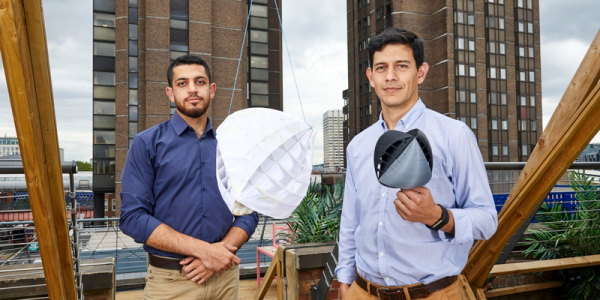
Google and the IEEE are giving away a million dollar prize to an individual or team, that can build the most efficient and compact DC to AC inverter. The goal is to design and build a 2kW inverter with a power density greater than 50W per cubic inch. To put that in perspective, conventional solar string inverters have power densities around 0.5-3W per cubic Inch, and microinverters around 5W per cubic Inch. So in other words, an order of magnitude more efficient than what we have now.
For the challenge, the inverter needs to convert 450VDC, with a 10 ohm series resistor simulating a solar array, to 240VAC @ 60Hz. Testing will consist of powering various resistive, inductive and capacitive loads ranging from 0-2kVA. The inverter is expected to regulate voltage within 5%, and frequency within 0.05%, while keeping the enclosure below 60 degrees C, and conforming to FCC Part 15 B (Unintentional radiators).
If you and/or your team can figure out the most efficient topology, switching frequency, novel use of high power wide bandgap (WBG) semiconductors, physically reduce the size of the input and output filters, and keep the whole thing running cool. Then get registered before the September 30, 2014 deadline. Inverters need to be functional and the results of this test procedure (PDF warning) sent in before July 22, 2015, then 18 finalists will be chosen to bring their inverters in person to a testing facility in the United States by October 21, 2015. The grand prize winner will be announced sometime in January, 2016
[Thanks for the tip Dmytro]
This Arduino power inverter would need a serious upgrade to enter. And speaking of entering challenges, it’s still not too late to enter our very own Hackaday Prize!




 The aim of this challenge is to transform the global food system using sustainable approaches that emulate natural process. Entries must address a problem somewhere in the food supply chain, a term that could apply to anything from soil modification to crop optimization to harvest and storage technologies. Indeed, the 2015 winner in the Student category was for a
The aim of this challenge is to transform the global food system using sustainable approaches that emulate natural process. Entries must address a problem somewhere in the food supply chain, a term that could apply to anything from soil modification to crop optimization to harvest and storage technologies. Indeed, the 2015 winner in the Student category was for a 













